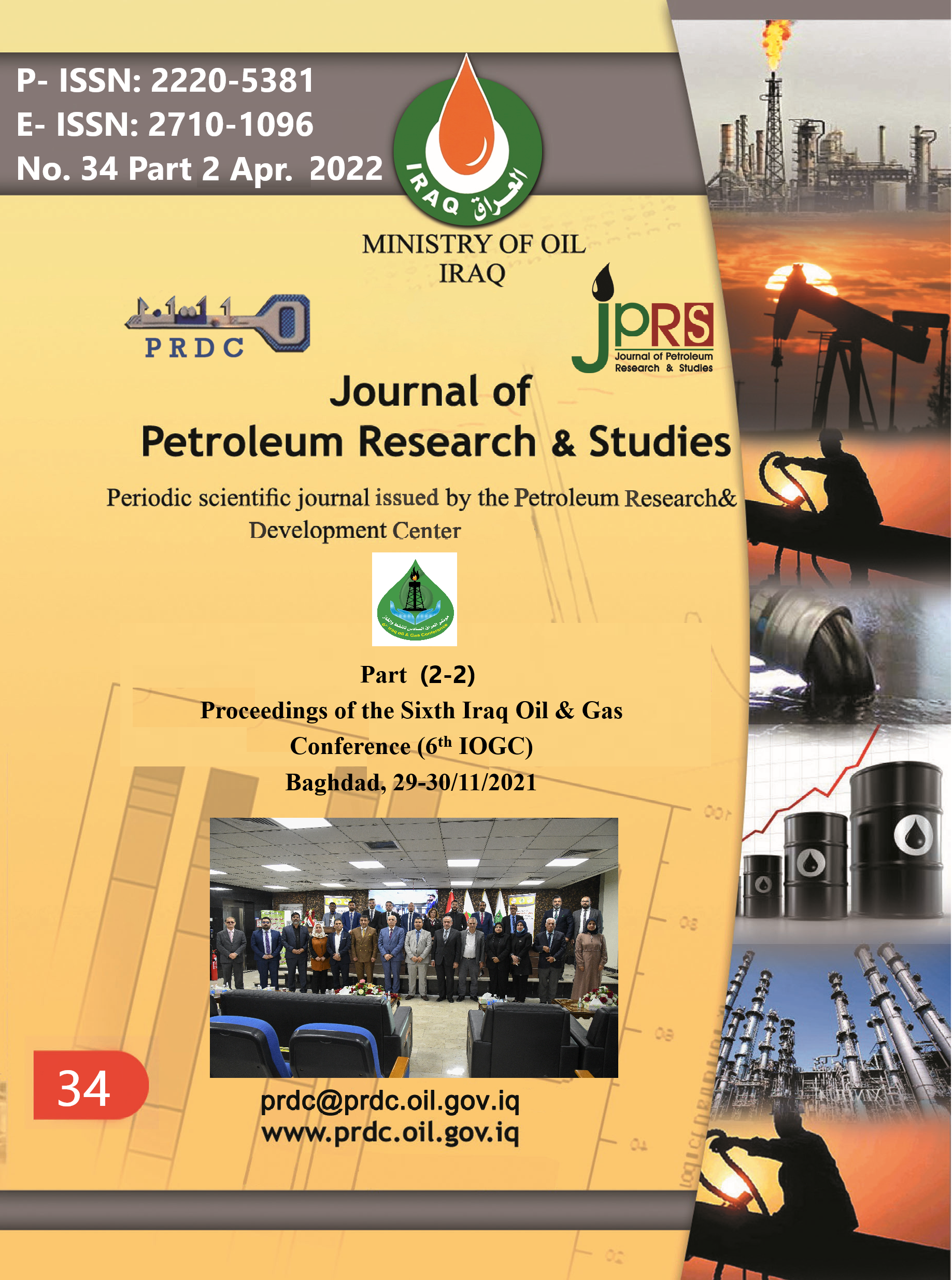Corrosion Control Mechanisms and the Effect of pH on Corrosion in the Crude Oil Refining Process
DOI:
https://doi.org/10.52716/jprs.v12i1(Suppl.).637Keywords:
Corrosion, refining unit, pH, overhead system, desalterAbstract
The consequences of corrosion in the crude oil refining process cannot be ignored due to the damage caused by the corrosion of oil equipment, and the serious losses that result from that. Therefore, in this research, methods of controlling the occurrence of corrosion in the crude oil refining unit in the Najaf refinery for four types of crude oil - API (28, 28.2, 29.2, and 30.2) were studied. Chemicals were added in different quantities and types before and during the crude oil refining process to the atmospheric distillation unit, where it was found that these chemicals have the ability to make a media within the limits of pH from 5.5 to 6.5, where the corrosion became little or no. Also, an anti-corrosion chemical was added, which reduced the incidence of corrosion in the overhead systems of crude oil refining equipment. In addition to treating the crude oil using desalter before refining it, where the mud and dirt and a large proportion of the salts in the emulsified water were removed from crude oil. The best results obtained were pH (6, 6, 5.7, and 5.5) and the percentage of iron ions Fe+2 ( 0.8, 1, 1.5, and 2.1) for four types of refined crude oil at using pump dosages for inhibitor (2.5, 2, 3.5 and 3.5), caustic soda (4, 6, 8, and 8) and neutralizer (2, 2.5, 3, and 3). This practical study showed the importance of adding chemicals in different quantities, as well as electrical and thermal treatment in controlling and preventing corrosion of oil equipment in the crude oil refining unit.
References
M. A. Fahim, T. A. Alsahhaf and A. S. Elkilani, Fundamentals of Petroleum Refining: Elsevier B.V. First Edition, 2010.
G. Alec, Corrosion Problems and Solutions in Oil Refining and Petrochemical Industry: Springer, Volume 32, 2017.
N. Farzad, M. Amir, F. Leila and J. Robabeh, "Assessment of localized corrosion in carbon steel tube-grade AISI 1045 used in output oil–gas separator vessel of desalination unit in oil refinery industry," Engineering Failure Analysis, vol. 40, pp. 75-88, 2014.
D. Agarwal and R. Akid, "Handbook of advanced materials – enabling new designs," Hoboken, New Jersey: John Wiley & Sons Inc, 2004.
S. Ashrafizadeh and M. Kamran, "Emulsification of heavy crude oil in water for pipeline transportation," J Petrol Sci Eng, vol. 71, pp. 205-11, 2010.
N. Perini, P. Corradini, V. Nascimento, E. Passamani and M. Freitas, "Characterization of AISI 1005 corrosion films grown under cyclic voltammetry of low sulfide ion concentrations," Corros, vol. 74, pp. 14–22, 2013.
HM. Tawancy, LM. Al-Hadhrami and FK. Al-Yousef, "Analysis of corroded elbow section of carbon steel piping system of an oil-gas separator vessel," Case Stud Eng Fail Anal, vol. 1, pp. 6-14, 2013.
G. S. James and W. Laramie, Oil and Gas Corrosion Prevention, Elsevier Inc, 2014.
T. A. Suzan and O. H. Basim, "Corrosion of carbon steel in formic acid as an organic pollutant under the influence of concentration cell," Journal of Petroleum Research & Studies (JPRS), vol. 27, pp. 76- 94, 2020.
R. C. Saxena, A. Jayaraman, R. K. Chauhan and H. B. Goyal, "Studies on corrosion control of naphtha fractions in overhead condensing system using laboratory distillation device," Fuel Processing Technology, vol. 91, pp. 1235-1240, 2010.
J. R. Rue and D. P. Naeger, "Advances in crude unit corrosion control, Corrosion'81," The NACE Int. Conf., National Association of Corrosion Engineers, Mar, San Francisco, California, USA, vol. 199, 1987.
Downloads
Published
How to Cite
Issue
Section
License
Copyright (c) 2022 Karrar A. Mohammed

This work is licensed under a Creative Commons Attribution 4.0 International License.














